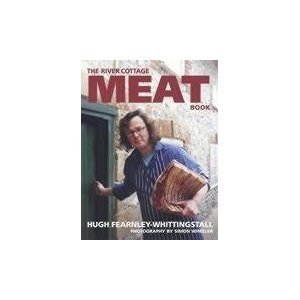I can say with some level of confidence that everyone has, at one time or another put a call into Mum at home to ask how long a Sunday
joint will cook.
“Oh, a couple of hours until it’s done” is a popular reply.
After all, without the said joint in view, how else can one answer?
Levity to one side, meat has always fallen into the serious cooking league, unless it comprises of the ubiquitous chicken breast fillets
from the local supermarket. We all seem able to throw together a curry
or some chicken fajitas, thankfully.
However, it is when we explore the full range of cuts available to us that we tend to lose our nerve. The cost of the meat combined with the
prospect of making a culinary faux-pas in front of the in-laws seems to
send our confidence into free fall.
Most cookery works deal with meat as a significant part of their content, but few write about it in detail, with a definitive “how to”
approach that is so often needed. Hugh Fearnley Whittingstall clearly
saw a gap in the market when he penned this impressive River Cottage
Meat Book back in 2004. It is a comprehensive guide to meat cookery
guide par excellence.
The book is divided into two main sections.
The first is entitled “Understanding Meat”, and it is within these
chapters that the principal animals of food consumption appear. As a
passionate food campaigner, his aim here is that we purchase our meat in
full possession of the facts. He objectively discerns between
supermarket, locally sourced, free range and organic meats.
Ironically he does not moralise, but instead allows his extensive
knowledge to deliver the facts to the reader, empowering them to be
aware of the whys and wherefores of meat production, leaving the
ultimate moral choice up to the individual. If Buy-One-Get-One-Free are
what you can afford, then so be it. Hugh provides the recipes and
techniques for you to cook them.
Section two is the essence of meat cookery broken down into its principal areas: Roasting, slow cooking, barbecuing, preserving and
processing. He breaks down each of the methods and explains the stages
that occur during cooking such as sealing, caramelising and resting.
I tested the braising section by attempting to up my game with beef in stout, which has long been the butt of endless family complaints,
including the toughness of the beef cubes, (you’ve left the saddle on
again Mum) and the insipid taste of the gravy.
Following one or two of Hugh’s simple extra steps had me a first class
result, with a modest purchase of beef from my weekly shop.
I was impressed and understood why the additional effort was an essential adjunct to the recipe.They were, as he duly explained not
“cheffy” touches but necessary stages to the overall flavour and taste
of the meat. How right he was.
It may sound like a statement of the obvious here, but knowing how something cooks is the key to ensuring a tasty dish on the table every
time, and this is the book to show you how.
Moreover, if you have taken a bit of time and thought over sourcing and
buying the meat, the odds are the flavour and eating experience will be
greatly enhanced too.
Simple principles brought to you by Mr Hugh Fearnley Whittingstall in this must have book for the kitchen shelf.
For more information on the book, click the link at the top of the
article.
